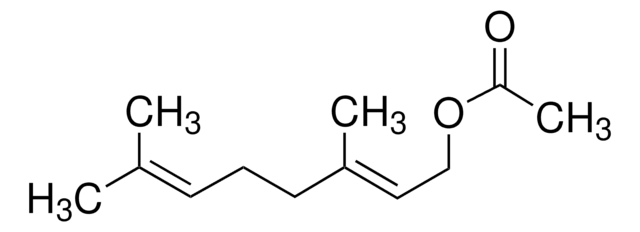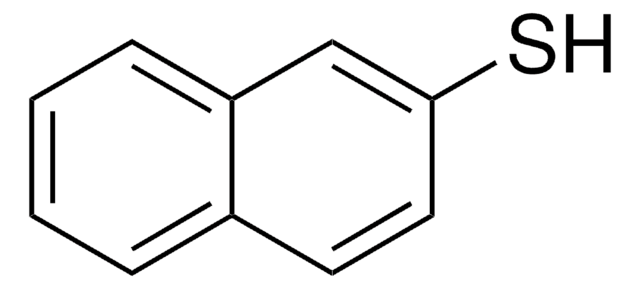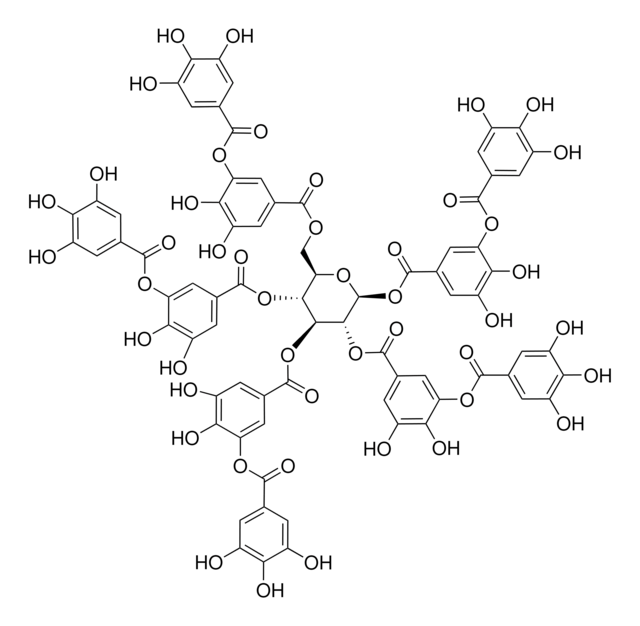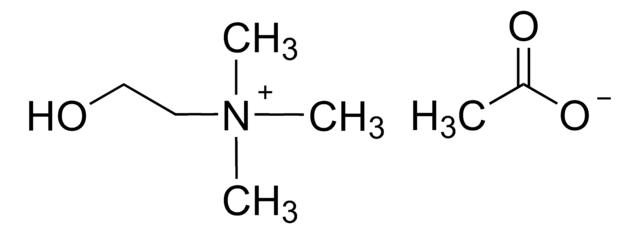427764
Geranic acid
technical grade, 85%
Synonym(s):
3,7-Dimethyl-2,6-octadienoic acid
About This Item
Recommended Products
grade
technical grade
Quality Level
Assay
85%
form
liquid
refractive index
n20/D 1.484 (lit.)
bp
250 °C (lit.)
density
0.97 g/mL at 25 °C (lit.)
SMILES string
C\C(C)=C\CC\C(C)=C\C(O)=O
InChI
1S/C10H16O2/c1-8(2)5-4-6-9(3)7-10(11)12/h5,7H,4,6H2,1-3H3,(H,11,12)/b9-7+
InChI key
ZHYZQXUYZJNEHD-VQHVLOKHSA-N
Looking for similar products? Visit Product Comparison Guide
Related Categories
General description
Application
- Enhancement of antibiotic properties: Capric acid and geranic acid were used to improve the pharmaceutical properties and antibacterial activity of levofloxacin (Alkhawaja et al., 2023).
- Aryl hydrocarbon receptor modulation: Research on natural deep eutectic solvents including fatty acids like geranic acid has demonstrated their capability to modulate the aryl hydrocarbon receptor independently of traditional ligands, suggesting potential in metabolic regulation and therapeutic applications (Denis et al., 2023).
- Transdermal delivery systems: A study on ionic liquids composed of geranic acid for obesity treatment highlighted their use in transdermal drug delivery systems, presenting a non-invasive alternative for therapeutic management (Lu et al., 2023).
- Antimicrobial and antielastase properties: Geranic acid has been shown to inhibit elastase activity and bacterial growth, offering potential applications in oral health products and treatments for conditions involving pathogenic bacteria and inflammation (Laird et al., 2023).
Signal Word
Warning
Hazard Statements
Precautionary Statements
Hazard Classifications
Acute Tox. 4 Dermal - Skin Irrit. 2
Storage Class Code
10 - Combustible liquids
WGK
WGK 3
Flash Point(F)
271.4 °F - closed cup
Flash Point(C)
133 °C - closed cup
Personal Protective Equipment
Certificates of Analysis (COA)
Search for Certificates of Analysis (COA) by entering the products Lot/Batch Number. Lot and Batch Numbers can be found on a product’s label following the words ‘Lot’ or ‘Batch’.
Already Own This Product?
Find documentation for the products that you have recently purchased in the Document Library.
Customers Also Viewed
Our team of scientists has experience in all areas of research including Life Science, Material Science, Chemical Synthesis, Chromatography, Analytical and many others.
Contact Technical Service











